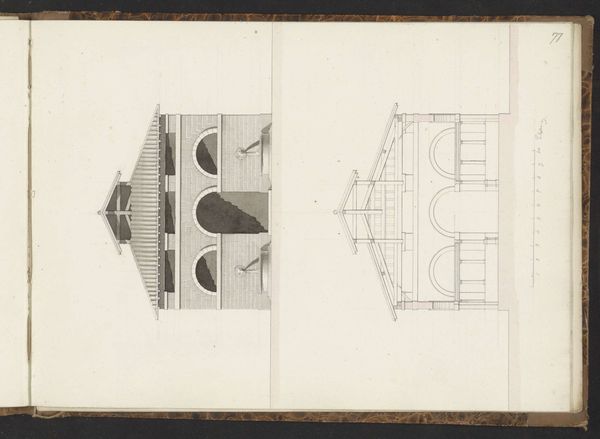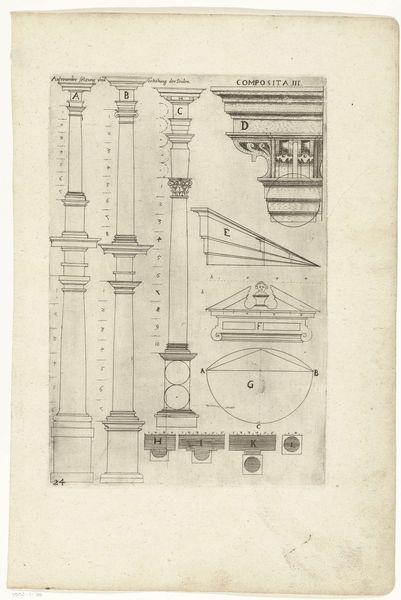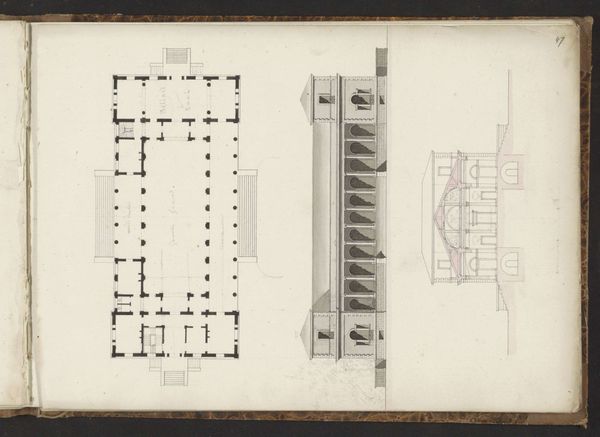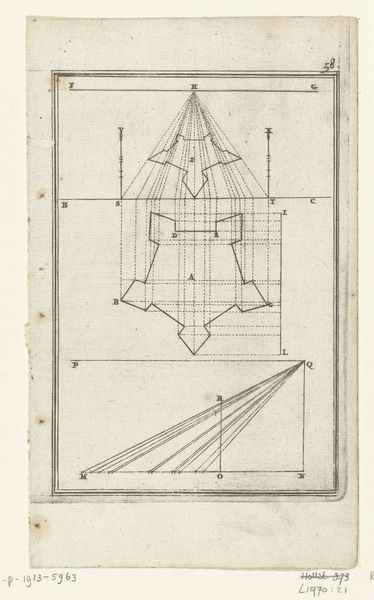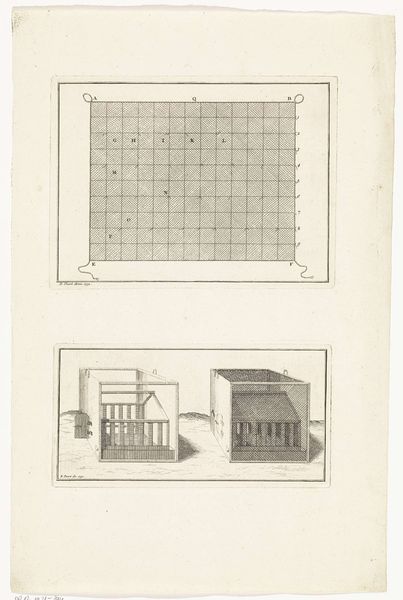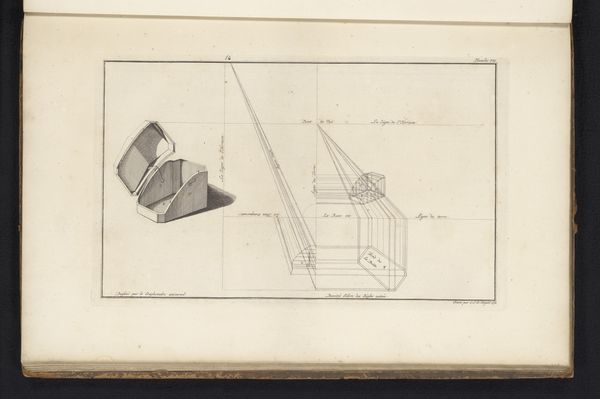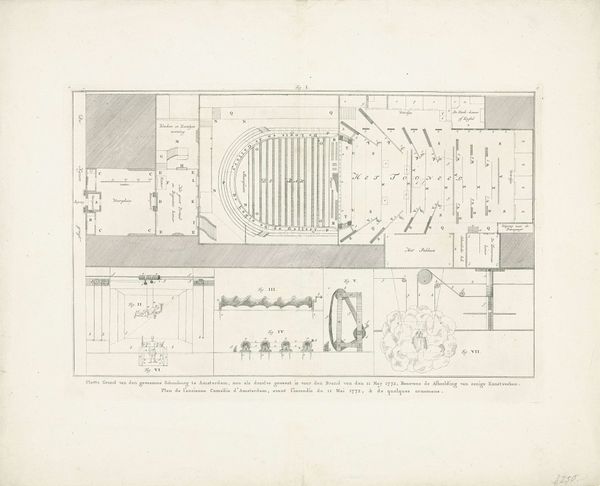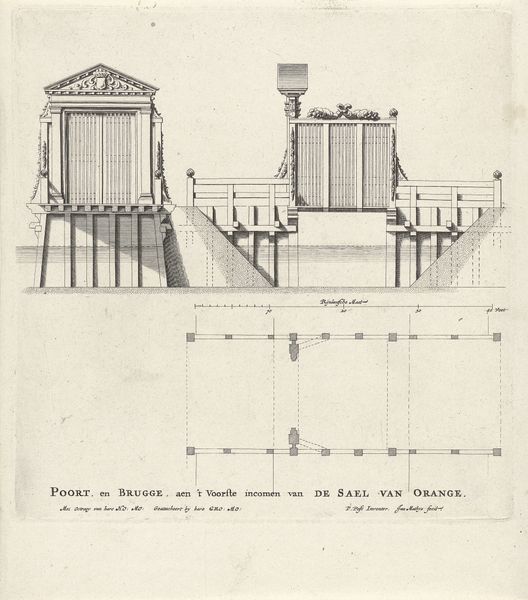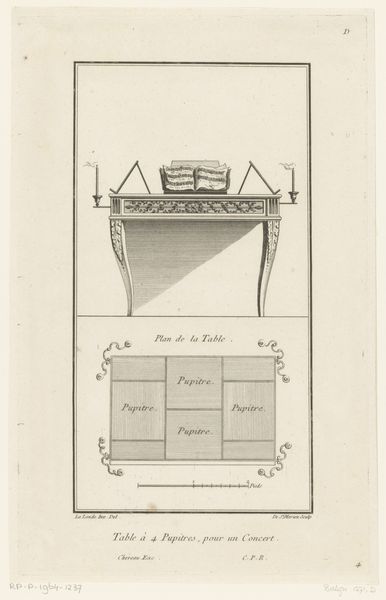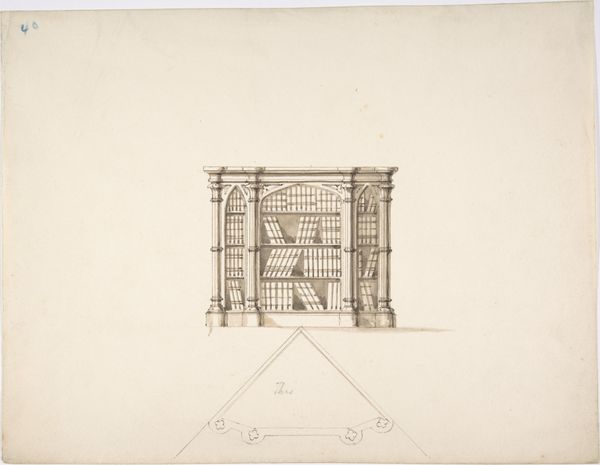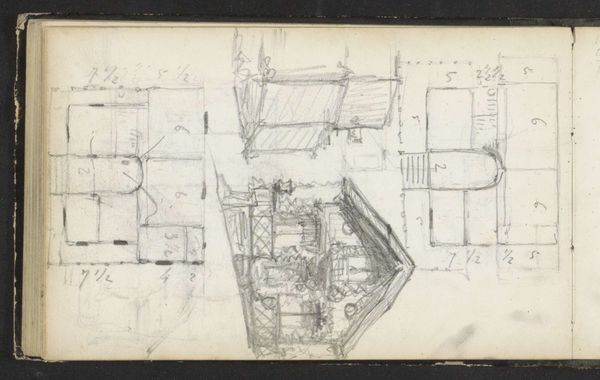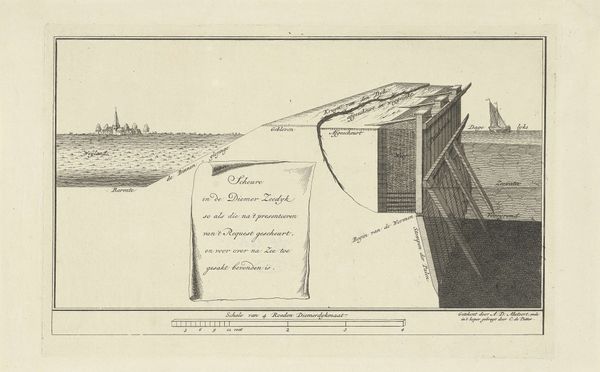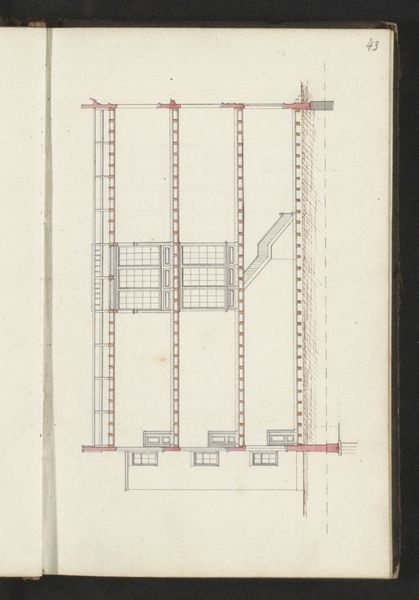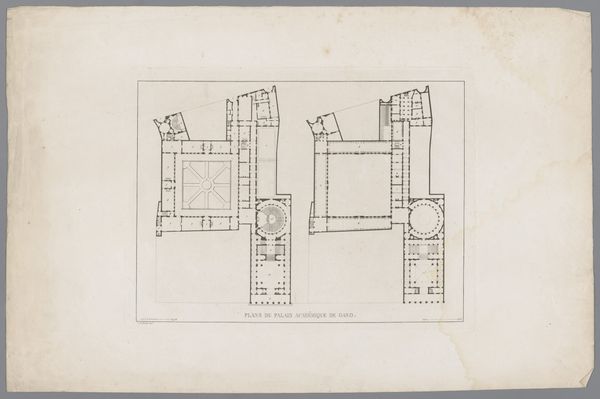
drawing, paper, engraving, architecture
#
architectural sketch
#
drawing
#
sketch book
#
landscape
#
paper
#
form
#
11_renaissance
#
geometric
#
line
#
engraving
#
architecture
Dimensions: height 289 mm, width 372 mm
Copyright: Rijks Museum: Open Domain
Curator: What we’re looking at is a fascinating drawing titled "Blad met twee ontwerpen voor experimentele schepen, ca. 1650"—"Sheet with two designs for experimental ships, around 1650." It appears to be from sometime between 1751 and 1753, rendered with engraving techniques. Editor: My initial thought? Utilitarian and strange! The precision of the lines against the slightly off-kilter geometric forms is oddly compelling. It gives me the sense that I am looking at the blueprints for something simultaneously functional and wildly ambitious. Curator: Absolutely. There is something so concrete and solid about rendering a concept, something that could float us, in a visual language of line and measurement. I wonder about the hand that guided the burin, and if this drawing was ever materialised into wood and canvas, what the daily life of a vessel built this way would look like? Editor: That focus on practicality strikes me too, I see not only the artistic or even just mechanical merit. Think of the intense labor involved in this rendering as an engraved piece, transferring concepts to hard matrix. The lines we are observing are not just imaginative – it speaks about economy, maritime, about its own kind of intensive human effort. Curator: You bring me back down to earth in the most poetic way. Because you're right—this sheet becomes a symbol of trade. The almost fragile and faint image it carries stands in contrast to a more brutal demand. I am pulled in by the flag; it makes me want to dream, which could not have been its function within the bigger enterprise. Editor: Exactly! And think of the materiality—the paper itself. Was it locally sourced, or another item of exchange? What dyes made the flag, and were those manufactured or found? It pushes us to understand its true purpose in a wider picture. Curator: It reminds me that art offers us an imaginative springboard—the promise to always learn new languages, so we keep reinventing the terms on which we interact with this piece. Editor: Indeed. A ship is so much more than its blueprint—it’s the wood, the rope, the bodies on board, all intertwined. And this drawing, as an artifact of a particular moment in material history, invites us to navigate those complex waters.
Comments
No comments
Be the first to comment and join the conversation on the ultimate creative platform.
